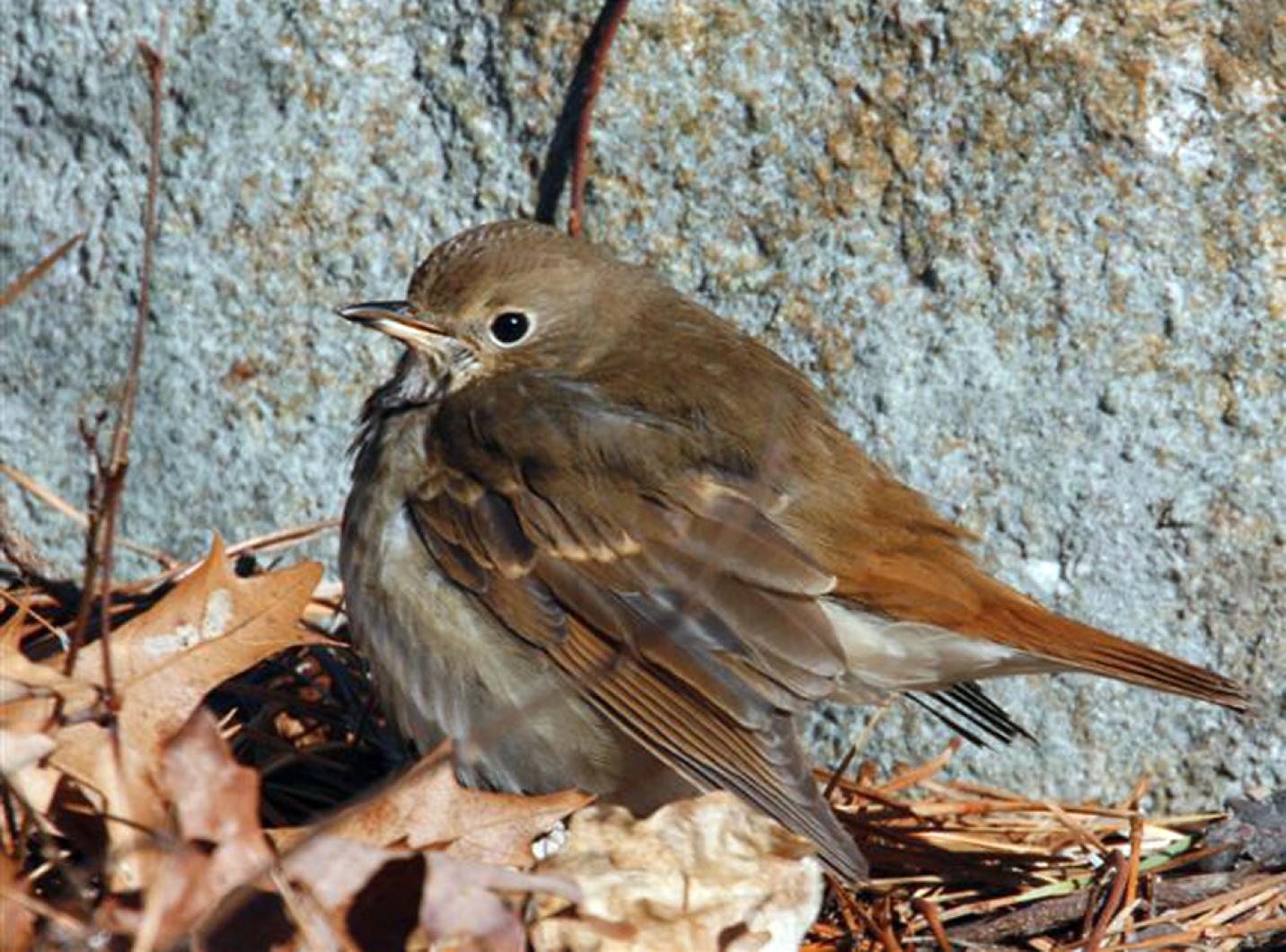The Bird Line (508-696-7577) would often languish unattended were it not for Happy Spongberg, who always keeps an alert eye open in the productive habitat near her home off Tea Lane in Chilmark. This week, Happy reports not one but two yellow-bellied sapsuckers, an adult male and an immature bird, on the same pine tree. The pair, reports Happy, were climbing in a spiral around the tree “like the stripe on a barbershop pole,” with the adult bird occasionally taking a swipe at the youngster, just to be sure everybody knew who was in charge. Sapsuckers are not exactly rare on the Vineyard, and they do linger into the early winter and sometimes beyond. But they are never common; two in one day is unusual, and two in one tree is the kind of thing that makes one go home, make a cup of tea and feel content.
From Felix Neck come reports of a red-winged blackbird, a great blue heron, a Cooper’s hawk, a belted kingfisher, and variety of waterfowl. Indeed, we’re into the season when ducks inhabit any body of water bigger than a bathtub. Small flocks of scaup can be found on the great ponds. Seth’s Pond, a boon to the birder because its surface is so readily viewed from Lambert’s Cove Road, has featured ring-necked ducks, buffleheads, hooded mergansers, and, on Monday, a pied-billed grebe.
I am always struck by how reliably a change in the landscape attracts new bird life. For years now, I’ve regularly checked out the hay field to the south-west of the intersection of New Lane and the West Tisbury Road, never finding much there. But recently the field was plowed and reseeded — a process that rejuvenates a hay field and also attracts birds, as the disturbance of the soil turns up seeds, worms and other food items. Stopping there recently to check out some gulls on the field (ring-billed, plus one second-winter herring), I also spotted a small flock of pipits, always a welcome sight. It took 12 years to find pipits there, and it may take 12 more to find them again. But there they were.
Stan Mercer has been hosting a seasonal oddity at his feeder in Chilmark: a rose-breasted grosbeak. The species nests sparsely on the Vineyard, and is actually fairly common in the southern New England mainland. But this is one of those birds that really bails out in the fall, evidently driven by a migratory impulse that is strong and reliably present in the species: September migrants, usually immature birds, are not unusual, but once you get past early October, these birds are gone, gone, gone, off to their Mexican and Central American wintering grounds. In fact, at this point in the season, a Vineyard birder is probably as likely to find a vagrant black-headed grosbeak, a closely related species from the western United States, as a rose-breasted grosbeak. Immatures of these species can be difficult to distinguish, but several able observers have scrutinized Stan’s bird and pronounced it a first-year male rose-breasted grosbeak – a very nice bird for the season.
While most of our migratory breeding birds have left, and the high-volume part of fall migration is long since over, it’s always worth birding the thickets and shorelines at the west end of the Vineyard. Allan Keith hosted a brief visit from Jed Burtt, the president of the American Ornithologists Union, late last week. Birding at Gay Head, Allan and Jed turned up a house wren (a species that has grown more common on the Vineyard in recent years, both as a breeder and as a migrant) and a vesper sparrow (formerly a common breeder here, now an uncommon transient that is virtually extirpated as a breeder in the Cape and Islands region). They also picked out a red-necked grebe on the water below the cliffs.
Allan notes that many of our usual winter visitors are just beginning to arrive. The rafts of sea ducks that typically winter off the western end of the Island have only begun to accumulate. The first white-throated sparrows are just appearing at feeding stations, and many other winter residents — juncos, tree sparrows, golden-crowned kinglets — are scarce or not to be found. A likely explanation is the weather, which has been stormy but neither cold nor snowy; there has been little incentive for northern birds to move south. But things may be changing: recently, we’ve had a few frosty mornings and a few bursts of wet snow, and shrewd birders are out there working shrub swamps, moist thickets, greenbriar patches, crab-apple trees, and multiflora rose bushes. These habitats could host anything from an American robin to a hermit thrush to a winter wren to a Townsend’s solitaire: bad weather brings good birds, and good birders bird in bad weather. Given a choice between waiting for spring or birding now, I recommend the latter.
Please report your bird sightings to the Martha’s Vineyard Bird Hotline at 508-627-4922 or e-mail to birds@mvgazette.com.




Comments
Comment policy »